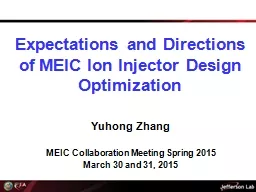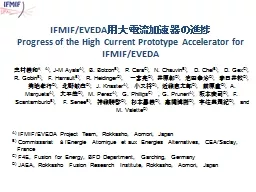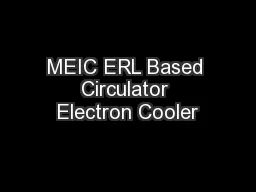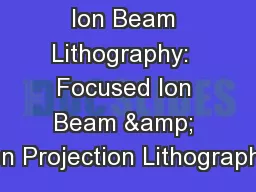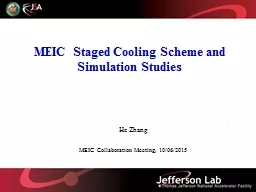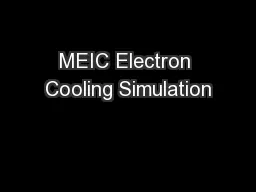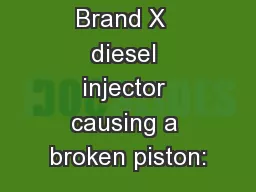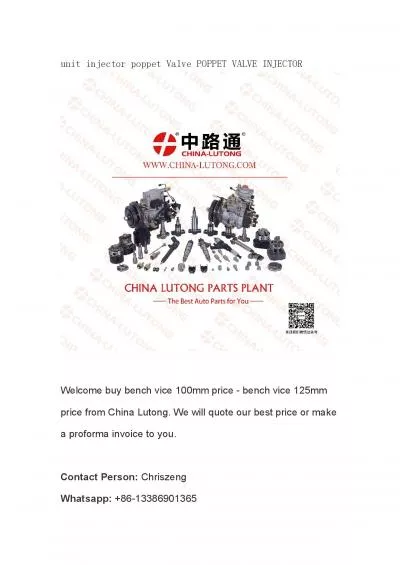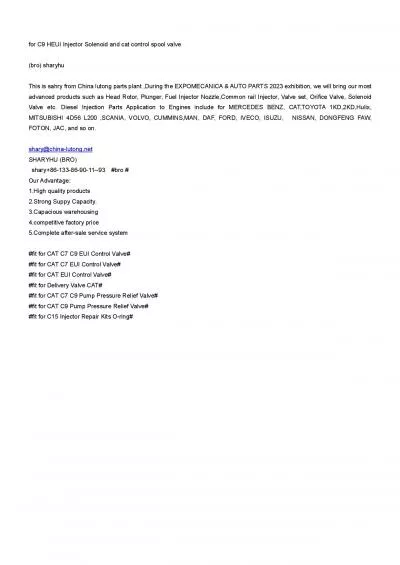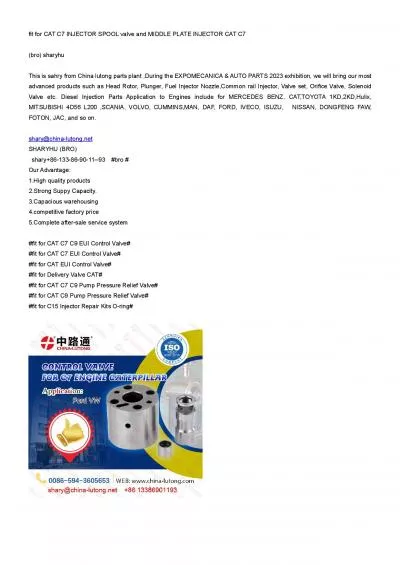PPT-Expectations and Directions of MEIC Ion Injector Design Optimization
Author : pasty-toler | Published Date : 2018-11-08
Yuhong Zhang MEIC Collaboration Meeting Spring 2015 March 30 and 31 2015 MEIC ion injector complex was designed more than 10 years ago B ack at that time it
Presentation Embed Code
Download Presentation
Download Presentation The PPT/PDF document "Expectations and Directions of MEIC Ion ..." is the property of its rightful owner. Permission is granted to download and print the materials on this website for personal, non-commercial use only, and to display it on your personal computer provided you do not modify the materials and that you retain all copyright notices contained in the materials. By downloading content from our website, you accept the terms of this agreement.
Expectations and Directions of MEIC Ion Injector Design Optimization: Transcript
Download Rules Of Document
"Expectations and Directions of MEIC Ion Injector Design Optimization"The content belongs to its owner. You may download and print it for personal use, without modification, and keep all copyright notices. By downloading, you agree to these terms.
Related Documents

